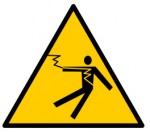Making Those New Year’s Resolutions? They often include health, finances, safety, and career.
In-house Resource Planning Tool
A solution to one of the AEC industry’s toughest challenges.
We found ourselves in need of a more robust tool to enhance resource forecasting and staff assignment capabilities. Instead of waiting for the perfect tool, we’re building it. SSOE’s in-house technology team has developed and piloted a tool that aims to forecast optimal staff mix and duration for new projects against existing workload to better understand capacity and manage…

